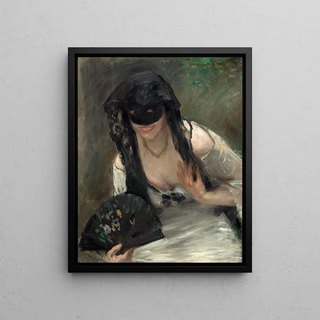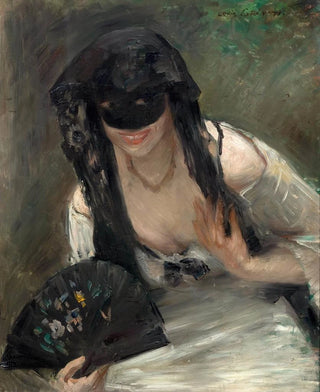Art print | Mask in a white dress - Lovis Corinth


View from behind

Frame (optional)
In the fascinating world of art, some works stand out for their ability to capture the very essence of humanity. "Masque dans une robe blanche" by Lovis Corinth is undoubtedly one of these iconic pieces. This painting, both mysterious and evocative, invites viewers to immerse themselves in a world where the human face blends with symbolic elements, creating an atmosphere of introspection and contemplation. The depiction of a mask, combined with the delicacy of the white dress, suggests themes of duality and identity, while evoking deep and universal emotions.
Style and uniqueness of the work
Lovis Corinth, master of post-impressionism, is distinguished by his bold approach to colors and shapes. In "Masque dans une robe blanche," he employs a subtle palette, oscillating between soft nuances and vibrant flashes, to bring to life a composition that is both harmonious and dynamic. The rich texture of the painting, resulting from vigorous brushstrokes, creates a depth that draws the eye and invites exploration. The contrast between the mask, a symbol of mystery, and the white dress, a symbol of purity, is particularly striking. This duality is reflected in how Corinth plays with light and shadow, giving the work an almost sculptural dimension. Every detail, every fold of the dress, seems to tell a story—an invitation to question the nature of identity and self.
The artist and his influence
Lovis Corinth, born in 1858 in Prussia, established himself as a major figure in 20th-century German art. Influenced by masters such as Rembrandt and Van Gogh, he developed a style that combines tradition and modernity. His works, often imbued with strong emotional charge, explore various themes, ranging from nature to the human condition. "Masque dans une robe blanche" fits within this desire to transcend simple portraiture and offer a reflection on the complexity of the human soul. Corinth was also a pioneer in using color as a means of expression, breaking away from academic conventions of his time. His influence endures

Matte finish

View from behind

Frame (optional)
In the fascinating world of art, some works stand out for their ability to capture the very essence of humanity. "Masque dans une robe blanche" by Lovis Corinth is undoubtedly one of these iconic pieces. This painting, both mysterious and evocative, invites viewers to immerse themselves in a world where the human face blends with symbolic elements, creating an atmosphere of introspection and contemplation. The depiction of a mask, combined with the delicacy of the white dress, suggests themes of duality and identity, while evoking deep and universal emotions.
Style and uniqueness of the work
Lovis Corinth, master of post-impressionism, is distinguished by his bold approach to colors and shapes. In "Masque dans une robe blanche," he employs a subtle palette, oscillating between soft nuances and vibrant flashes, to bring to life a composition that is both harmonious and dynamic. The rich texture of the painting, resulting from vigorous brushstrokes, creates a depth that draws the eye and invites exploration. The contrast between the mask, a symbol of mystery, and the white dress, a symbol of purity, is particularly striking. This duality is reflected in how Corinth plays with light and shadow, giving the work an almost sculptural dimension. Every detail, every fold of the dress, seems to tell a story—an invitation to question the nature of identity and self.
The artist and his influence
Lovis Corinth, born in 1858 in Prussia, established himself as a major figure in 20th-century German art. Influenced by masters such as Rembrandt and Van Gogh, he developed a style that combines tradition and modernity. His works, often imbued with strong emotional charge, explore various themes, ranging from nature to the human condition. "Masque dans une robe blanche" fits within this desire to transcend simple portraiture and offer a reflection on the complexity of the human soul. Corinth was also a pioneer in using color as a means of expression, breaking away from academic conventions of his time. His influence endures






